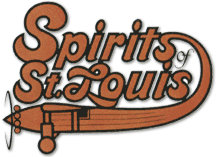Bank Shot
America’s largest professional basketball league, the National Basketball Association (NBA), has been around since 1946. There are thirty different NBA teams scattered across the United States and Canada (okay, only one is in Canada). But for decades, the league was much smaller. As recently as 1967, there were only ten NBA teams, and the owners of those franchises were not keen on expanding to new cities. Would-be owners in other cities, shut out by the NBA’s lack of interest to expand there, began their own league, the American Basketball Association (ABA) that same year.
The ABA, as a business, wasn’t very successful — many of its teams teetered on the verge of bankruptcy or folded outright during the league’s nine year history. But the mere existence of a competitive professional basketball league was a big enough problem for the stronger NBA, as basketball players now had the ability to negotiate higher salaries simply by leaving (or threatening to leave) the NBA for the ABA. A merger made sense for both leagues (and some believe that the true intention of the ABA owners was to force the NBA to expand), and by 1970, the two leagues were close to combining. But a lawsuit by the NBA Players Association prevented this — the players did not want to lose the leverage gained by having two leagues. It wasn’t until 1976 that the lawsuit was resolved and a merger was allowed to go forward.
But the NBA didn’t want all seven surviving ABA teams. They only wanted four — the Indiana Pacers, the New York (now Brooklyn) Nets, the San Antonio Spurs, and the Denver Nuggets all joined the more established league. The other three were to be dissolved. The Virginia Squires took care of that themselves, going bankrupt just after the ABA’s final season, but the merger agreement required unanimous consent from the ABA’s owners and two teams — the Kentucky Colonels and the Spirits of St. Louis — needed a reason to accept a deal which would end their franchises’ existences. The Colonels’ owner, John Y. Brown, took a $3.3 million buyout. But the Silna brothers, who owned the Spirits, were not as accommodating. They wanted some upside.
The deal they made? $3 million up front, and to make up the $300,000 they left on the table, a share of future television revenues from the four teams joining the NBA. Specifically, the Spirits’ owners would receive one-seventh of the TV dollars earned by the Nets, Pacers, Mavericks, and Spurs. For the 1976-1977 NBA season, that was an estimated $300,000, evening out what they gave up. But the Silna brothers didn’t ask for that cut just from the next season. They demanded it in perpetuity, and the NBA met their demands.
Over the thirty-five or so seasons since the ABA-NBA merger, the Silnas’ have been receiving an annual payment from the NBA. Last year, that check was well north of $10 million, and over the course of the agreement, the Silnas have earned well over $250 million, according to the New York Times. On the downside, St. Louis hasn’t won an NBA championship in since the merger — the Spirits are long gone, and the NBA relocated the St. Louis Hawks to Atlanta in 1968. (The Silna brothers probably don’t care, though — they were planning on relocating their team to Utah, anyway.)
Bonus fact: John Y. Brown pulled off a pair of odd coups of his own. While the four ABA teams which joined the NBA had to pay a $3.2 million expansion fee, Brown got in for much less. Before the end of the 1976-1977 season, he bought a 50% stake in the Buffalo Braves for less than the $3.3 million he received in exchange for folding the Colonels. The Braves, though, were failing, and the Buffalo-area fans were not buying many tickets. A relocation was in order, and the Braves looked to move to San Diego and become the Clippers. At the same time, the owner of the Boston Celtics, a man named Irv Levin, wanted to relocate the storied Celtics to his home state of California. The NBA wouldn’t allow that, of course, so Brown and Levin swapped franchises. Levin became the owner of the (until recently, laughingstock) Clippers while Brown took ownership of one of the NBA’s crown jewels.
From the Archives: It’s Gotta Be the Shorts: How Michael Jordan and the NBA changed the course of short shorts, hopefully forever.
Related: “Loose Balls: The Short, Wild Life of the American Basketball Association” by Terry Pluto. 4.6 stars on 40 reviews, and available on Kindle.

